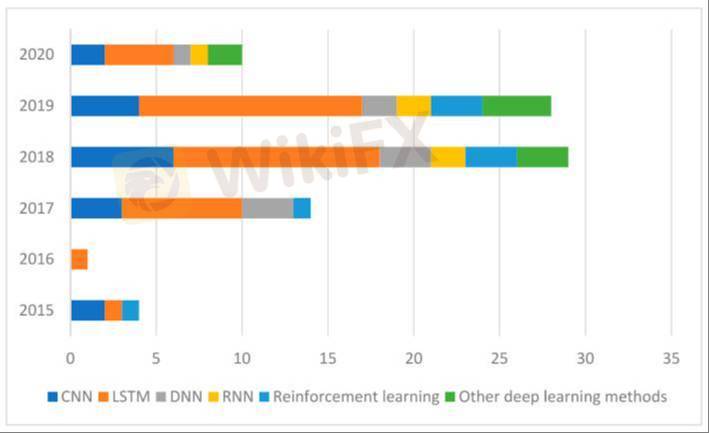
2025-02-27 04:38
Industry. The impact of deep learning on improving forex.
#AITradingAffectsForex
Deep learning has significantly impacted the field of forex trade predictions, offering potential improvements over traditional methods. Here's a breakdown of the key impacts:
Key Impacts:
* Enhanced Pattern Recognition:
* Forex markets are highly complex and influenced by numerous factors, including economic indicators, political events, and market sentiment. Deep learning models, particularly recurrent neural networks (RNNs) and long short-term memory (LSTM) networks, excel at recognizing intricate patterns and dependencies within time-series data. This allows them to capture subtle market trends that traditional methods might miss.
* Improved Handling of Non-Linearity:
* Forex market movements are often non-linear, meaning that simple linear models are insufficient to accurately predict future prices. Deep learning models, with their ability to learn complex non-linear relationships, can provide more accurate forecasts.
* Increased Accuracy in Volatility Prediction:
* Predicting market volatility is crucial for risk management in forex trading. Deep learning models can analyze historical data and identify factors that contribute to volatility, leading to more accurate predictions.
* Ability to Process Large Datasets:
* Forex markets generate vast amounts of data, including price data, news feeds, and social media sentiment. Deep learning models can efficiently process and analyze these large datasets, extracting valuable insights that can improve trading decisions.
* Adaptability and Learning:
* Deep learning models can adapt and learn from new data, allowing them to adjust to changing market conditions. This adaptability is crucial in the dynamic forex market.
Deep Learning Methods Used:
* Recurrent Neural Networks (RNNs) and LSTMs:
* These are particularly effective for time-series data, as they can remember past information and use it to predict future values.
* Convolutional Neural Networks (CNNs):
* While traditionally used for image recognition, CNNs can also be applied to forex data by converting it into a visual representation.
* Deep Neural Networks (DNNs):
* These are used to model complex nonlinear functions.
Important Considerations:
* While deep learning offers significant potential, it's essential to remember that forex trading is inherently risky. No model can guarantee profits.
* The accuracy of deep learning models depends heavily on the quality and quantity of data used for training.
* Overfitting is a risk, where a model performs well on training data but poorly on new data.
In conclusion, deep learning is transforming forex trade predictions by enabling more accurate and sophisticated analysis of market data.
Like 0
Zarur6589
Trader
Hot content
Industry
Event-A comment a day,Keep rewards worthy up to$27
Industry
Nigeria Event Giveaway-Win₦5000 Mobilephone Credit
Industry
Nigeria Event Giveaway-Win ₦2500 MobilePhoneCredit
Industry
South Africa Event-Come&Win 240ZAR Phone Credit
Industry
Nigeria Event-Discuss Forex&Win2500NGN PhoneCredit
Industry
[Nigeria Event]Discuss&win 2500 Naira Phone Credit
Forum category

Platform

Exhibition

Agent

Recruitment

EA

Industry

Market

Index
. The impact of deep learning on improving forex.
 India | 2025-02-27 04:38
India | 2025-02-27 04:38#AITradingAffectsForex
Deep learning has significantly impacted the field of forex trade predictions, offering potential improvements over traditional methods. Here's a breakdown of the key impacts:
Key Impacts:
* Enhanced Pattern Recognition:
* Forex markets are highly complex and influenced by numerous factors, including economic indicators, political events, and market sentiment. Deep learning models, particularly recurrent neural networks (RNNs) and long short-term memory (LSTM) networks, excel at recognizing intricate patterns and dependencies within time-series data. This allows them to capture subtle market trends that traditional methods might miss.
* Improved Handling of Non-Linearity:
* Forex market movements are often non-linear, meaning that simple linear models are insufficient to accurately predict future prices. Deep learning models, with their ability to learn complex non-linear relationships, can provide more accurate forecasts.
* Increased Accuracy in Volatility Prediction:
* Predicting market volatility is crucial for risk management in forex trading. Deep learning models can analyze historical data and identify factors that contribute to volatility, leading to more accurate predictions.
* Ability to Process Large Datasets:
* Forex markets generate vast amounts of data, including price data, news feeds, and social media sentiment. Deep learning models can efficiently process and analyze these large datasets, extracting valuable insights that can improve trading decisions.
* Adaptability and Learning:
* Deep learning models can adapt and learn from new data, allowing them to adjust to changing market conditions. This adaptability is crucial in the dynamic forex market.
Deep Learning Methods Used:
* Recurrent Neural Networks (RNNs) and LSTMs:
* These are particularly effective for time-series data, as they can remember past information and use it to predict future values.
* Convolutional Neural Networks (CNNs):
* While traditionally used for image recognition, CNNs can also be applied to forex data by converting it into a visual representation.
* Deep Neural Networks (DNNs):
* These are used to model complex nonlinear functions.
Important Considerations:
* While deep learning offers significant potential, it's essential to remember that forex trading is inherently risky. No model can guarantee profits.
* The accuracy of deep learning models depends heavily on the quality and quantity of data used for training.
* Overfitting is a risk, where a model performs well on training data but poorly on new data.
In conclusion, deep learning is transforming forex trade predictions by enabling more accurate and sophisticated analysis of market data.
Like 0
I want to comment, too
Submit
0Comments

There is no comment yet. Make the first one.

Submit
There is no comment yet. Make the first one.